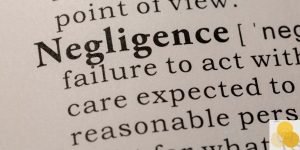The Different Types of Product Defects
There are three types of product liability cases:
- Manufacturing defects
- Design Defects
- Marketing defects
Manufacturing defects and design defects are the most common types of product defects. They are unintentional, often quality-related, and exist in only a few of the line’s products. Design defects are problems with the entire line of products due to the company’s design flaw. Marketing defects refer to a failure to provide adequate warnings or instruction for the product’s proper use.
Having adequate knowledge about these types of claims will help you understand whether you have a valid claim against the manufacturer or seller.
All states share the same three categories of product liability claims. However, some of the rules may differ from state to state. Also, recognize that you can only make a claim when a product defect leads to actual physical or financial damage.
There are three types of product defects: Design defects Marketing defects Manufacturing defects
1. Manufacturing Defects
Manufacturing defects are when the consumer gets injured or faces any type of financial damage due to a manufacturing defect. Such a defect arises in a product when there is an error while manufacturing the product. However, this happens to a limited number of products, and it’s an unintentional error that occurs during the production process.
2. Design defects
A design defect is when the manufacturer approves a flawed design for the product. Every product manufactured under that particular design comes with the dangerous defect. In this case, you can claim a design defect product liability claim. But keep in mind that you’ll have to prove that the injury or damage caused by the defect was due to the product’s design, and there exists a safer alternative design.
3. Marketing Defect
A marketing defect is when the manufacturer failed to provide adequate warnings and/or instructions about how hazardous a product is, which isn’t apparent to the consumer. Nonetheless, an injury is necessary to show proof of the manufacturer’s negligence. Without that, the manufacturer isn’t liable for such claims.
Contrasting the three types of product liability claims
Let’s compare all of the product liability claims by using a pharmaceutical product as an example. If someone gets injured because of a particular medication bottle due to some harmful added ingredient, you’ll claim a manufacturing defect product liability.
If you were injured because of the standard formula of the product and every other bottle if harmful in the same way, you’d be able to make a design defect liability claim.
Lastly, if the drug was manufactured appropriately and is safe to use, you just used it with some other medication, such as aspirin. Suppose there weren’t any special warnings or instructions for the consumer on the product. In that case, it is considered a marketing defect, as there was a failure to provide adequate warnings or instructions.

Preparing for a product liability lawsuit
When filing any type of defect lawsuit, the plaintiff must prove:
- That the defect was there at the time of purchase.
- That it caused the damage.
- That the plaintiff didn’t know about the hazard before using the product in the instructed manner.
If the defendant can prove any of these wrong, then the injured person will lose their case. Please make sure you do your homework on which type of case to present and the evidence necessary before engaging in a costly and time-consuming product liability lawsuit.






